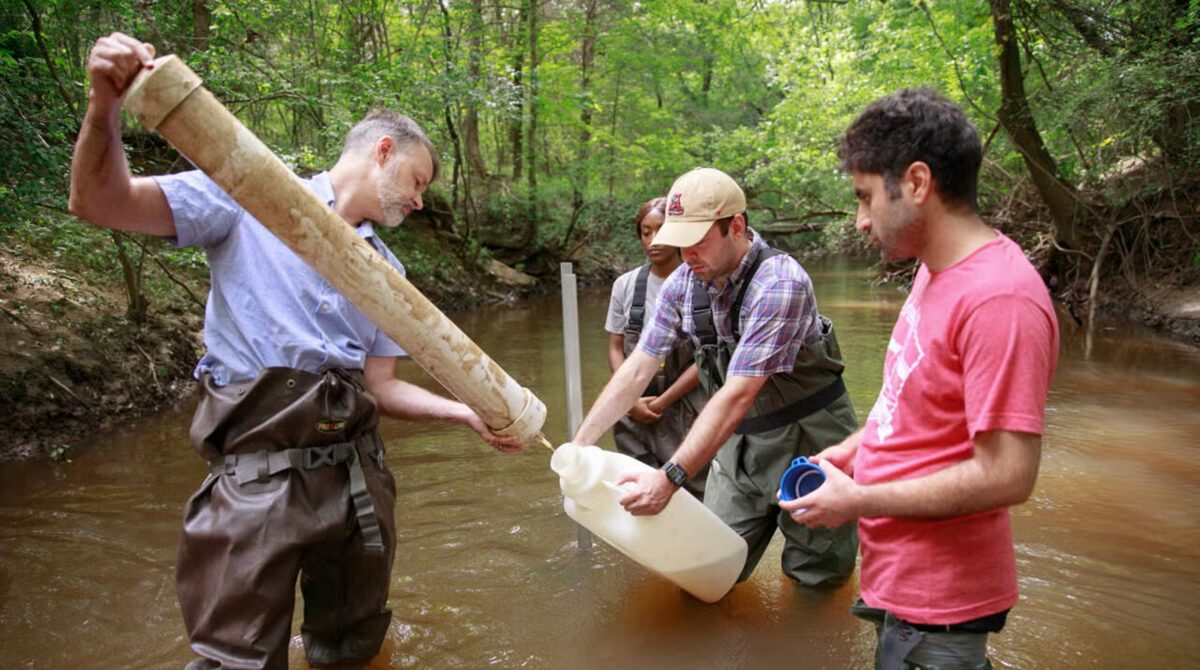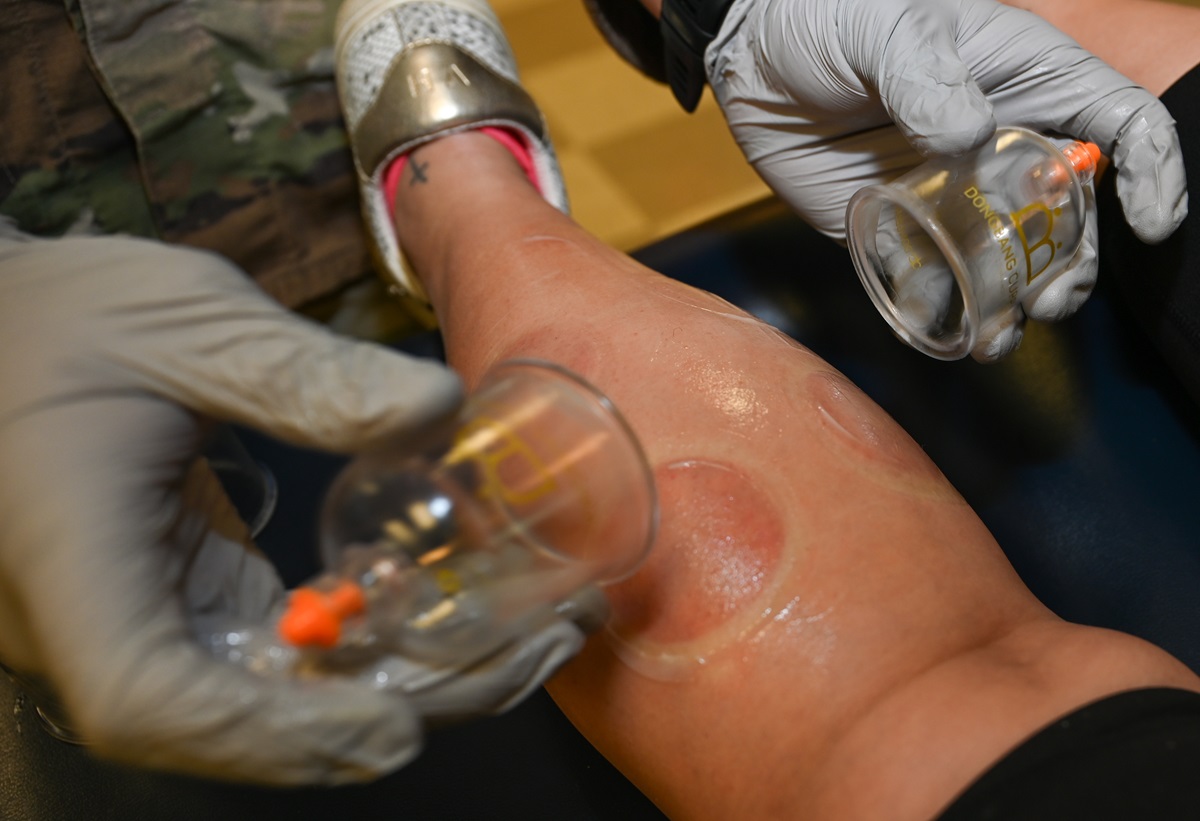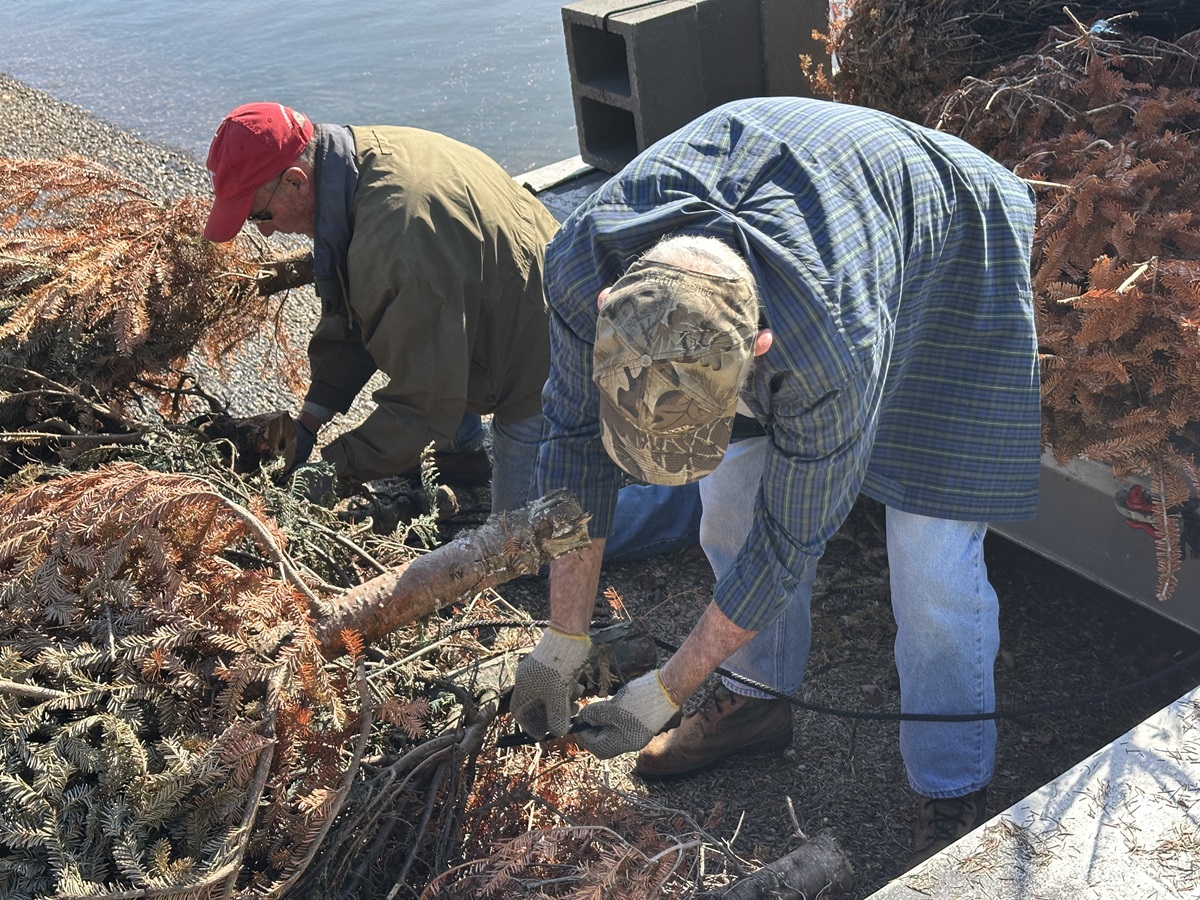Alabama Power Foundation helps Mobile history museum preserve story of Clotilda survivors
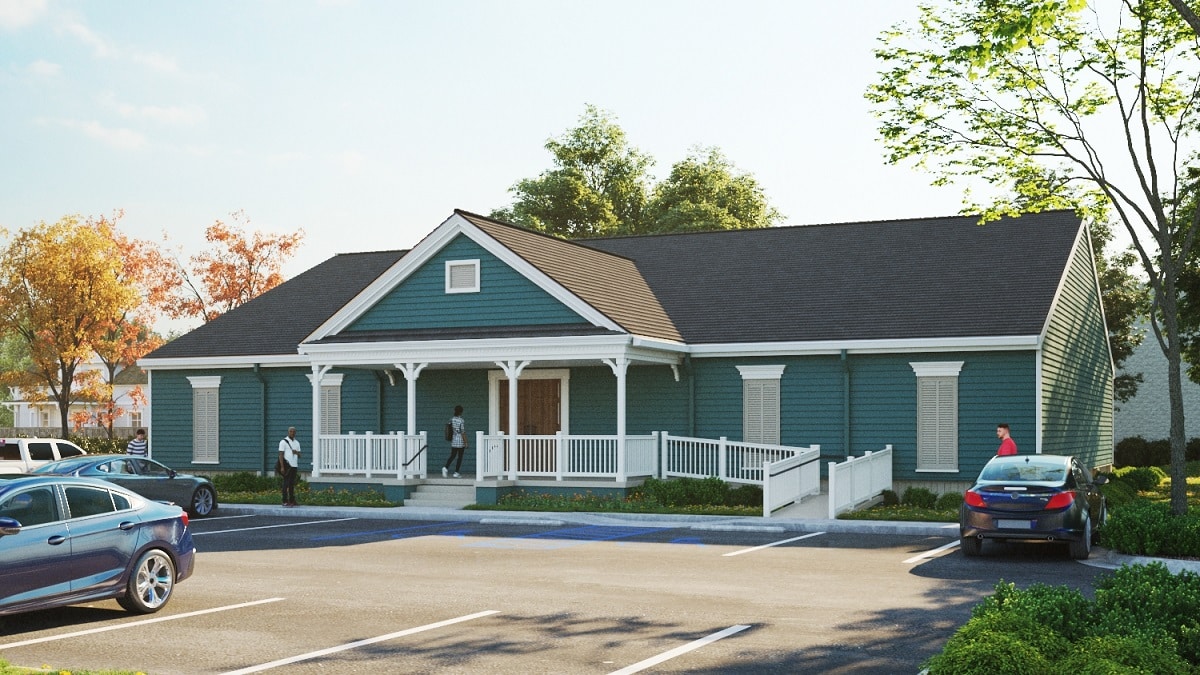
The Africatown Heritage House will be home to an exhibit telling the story of the Clotilda. (contributed)
The History Museum of Mobile is one step closer to sharing with the world the long untold story of the sunken schooner, the Clotilda, and the town created by the African survivors who once suffered aboard that ship.
On Nov. 10, the Alabama Power Foundation presented a grant to the museum to help develop “Clotilda: the Exhibition.” The museum, in partnership with the Alabama Historical Commission, will use the funds to help create, curate and construct the new Clotilda exhibit in the heart of Africatown.
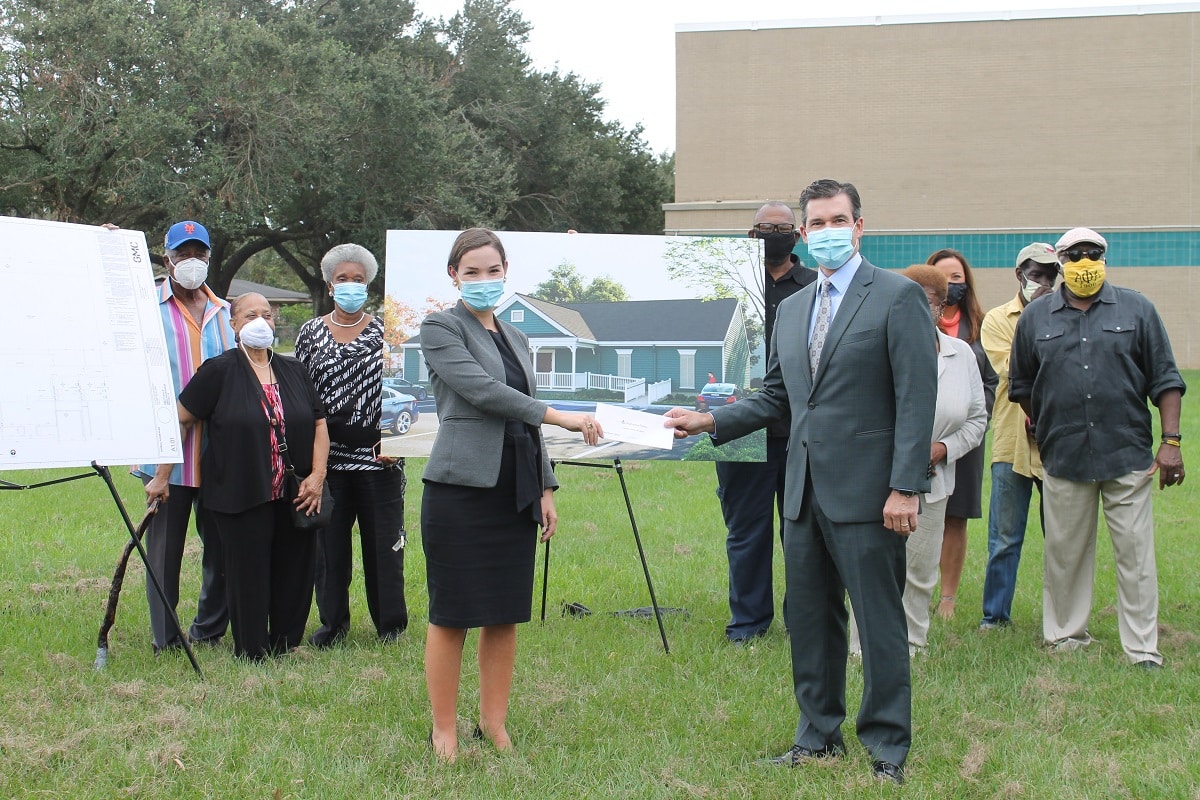
History Museum of Mobile Director Meg Fowler, left, receives an Alabama Power Foundation grant from Alabama Power Mobile Division Vice President Patrick Murphy on the site of the future Africatown Heritage House, which will be home to an exhibit on the Clotilda. (Alabama NewsCenter)
“The History Museum of Mobile is extraordinarily grateful for the grant from the Alabama Power Foundation, which will allow us to execute the high-quality exhibition that the subject matter and the people of Africatown deserve,” said History Museum Director Meg Fowler.
“This exhibition will be a central, physical location for locals and tourists alike to discover the details of this important history. The exhibition will cover the story of the Clotilda and include some of the artifacts that have been recovered from the shipwreck, with a special focus on the people of the story – their individuality, their perseverance and the extraordinary community they established,” she said.
Alabama Power Mobile Division Vice President Patrick Murphy presented the grant at a special ceremony at the site of the forthcoming Africatown Heritage House, which is expected to open in late summer 2021.
“Alabama Power Foundation is very proud to be a partner in bringing the Clotilda exhibit to the Africatown community,” said Murphy. “The story of the Clotilda is an important part of our history here in Mobile as well as on the national and international stage, and we hope this exhibit will keep the story alive for generations to come.”
Story of the Clotilda
In 1860, two co-conspirators, Tim Meaher and Capt. William Foster, bet that they could bring African captives into the United States, although the slave trade had been outlawed for more than 50 years. Under the cover of night, the Clotilda slipped into Mobile Bay with 110 enslaved Africans, becoming the nation’s last known slave ship.
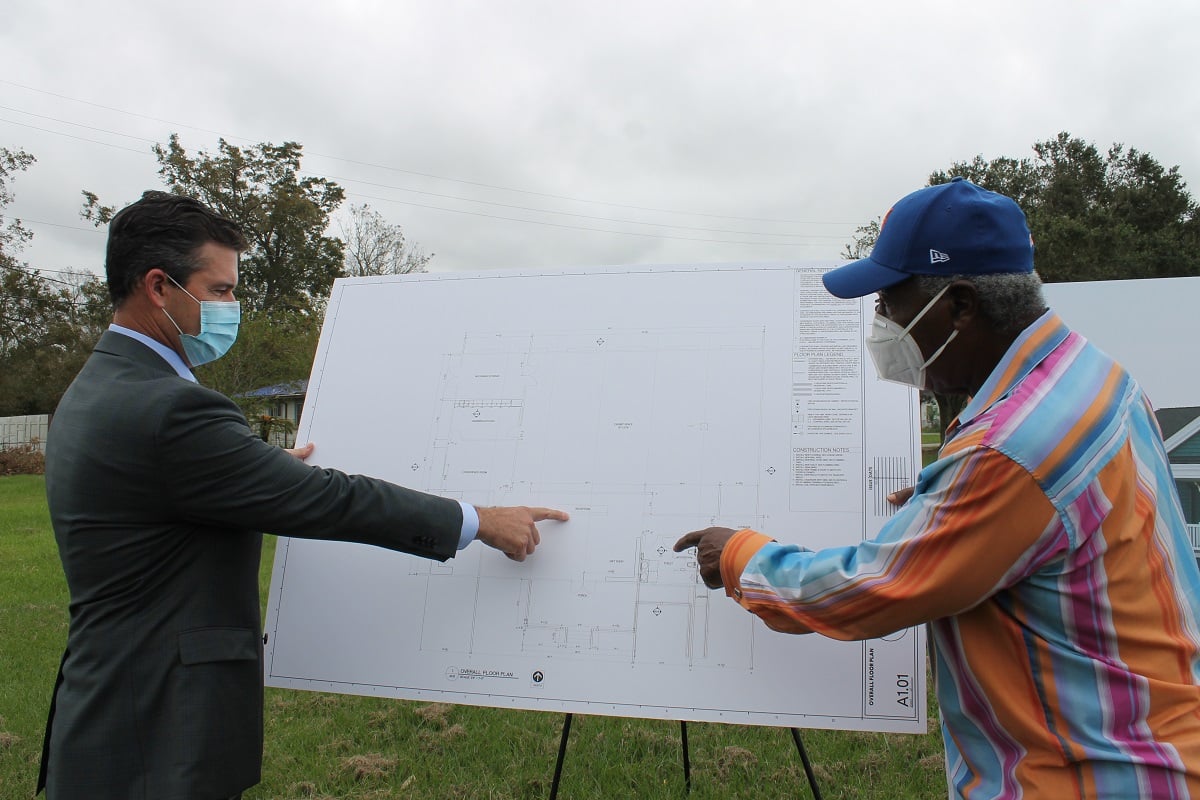
Alabama Power Mobile Division Vice President Patrick Murphy, left, looks over plans for the Africatown Heritage House with New York Mets baseball legend and Africatown resident Cleon Jones. (Alabama NewsCenter)
In a remarkable story of resistance and resilience, those Clotilda passengers survived enslavement and the Civil War, dreamed of returning to Africa and, ultimately, at the war’s end, established the community of Africatown near Mobile, said Fowler. Many of the Africatown residents today can trace their ancestry directly to a passenger on the Clotilda.
The old, almost forgotten story of the Clotilda rose out of the water once again in 2019 when a shipwreck was discovered in the Mobile River.
In early 2020, Mobile County Commissioner Merceria Ludgood launched a joint effort between Mobile County and the city of Mobile to construct the Africatown Heritage House, a permanent home for Clotilda and Africatown artifacts. The History Museum of Mobile then partnered with the Alabama Historical Commission and the Africatown Advisory Council to curate an exhibition that tells the story of the final journey of the Clotilda, the settlement and history of Africatown, and the discovery of the sunken schooner – all through a combination of interpretive text panels, documents and artifacts.
Although the History Museum of Mobile is not directly involved in the construction of the 5,000-square-foot Heritage House, Fowler said it has worked closely with the architects to design a space that will effectively accommodate the exhibition.
 “The role of the History Museum of Mobile is to curate, create and, eventually, to operate the exhibition,” Fowler said. “From the beginning, two things have been very important to this project. First, anything we did had to be community-driven. We are so grateful to be working with an outstanding group of Africatown community leaders who have guided and advised us at every step of the way. Second, we are committed to an exhibition that is not only historically accurate but also is executed to the highest standards of public history and curatorial practice.”
“The role of the History Museum of Mobile is to curate, create and, eventually, to operate the exhibition,” Fowler said. “From the beginning, two things have been very important to this project. First, anything we did had to be community-driven. We are so grateful to be working with an outstanding group of Africatown community leaders who have guided and advised us at every step of the way. Second, we are committed to an exhibition that is not only historically accurate but also is executed to the highest standards of public history and curatorial practice.”
The exhibition will be a rich, multisensory space, dense with compelling stories and images, Fowler said. Visitors can expect to see and hear lots of primary source reports and stories of individuals: their histories, their families and their resilient spirit.
“It’s not just an exhibit about a ship,” she said. “It’s about the people in Africatown and the stories they have been sharing for so many years. What the Alabama Power Foundation has really done is give a gift to Africatown and the people who have left a legacy there.”
